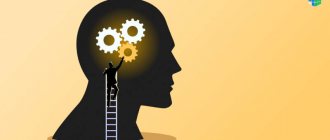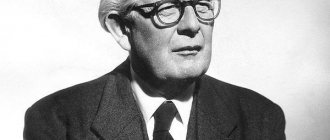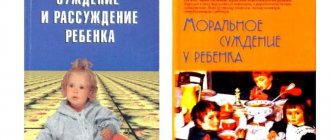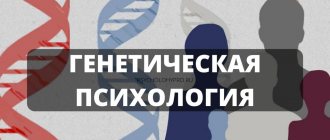Piaget's theory was created by a Swiss psychologist who dealt with issues of cognitive functions and intellectual development of children. Jean Piaget developed his own periodization of the formation of the child’s psyche, the main criterion of which was intelligence. He was also one of the first to talk about the close relationship between thinking and speech: the better one is developed, the better the other functions. The central direction of intellectual development is the formation of cognitive functions, which, according to the author, determine the overall development of the child.
Essence of the method
At a young age, Jean Piaget was interested in biology and constantly observed animals. The future scientist in the field of psychology presented the findings in detail in articles. The basis of his scientific life was the identification of the characteristics of children's and adolescent thinking.
The young researcher became a teacher at a boys' school in Paris. The director of the school was Binet, the inventor of IQ testing. Piaget collaborated with the leader, constantly helping him in processing the results.
According to the observations of a psychoanalyst, children of the same age category made approximately the same mistakes that adults never made. This became the basis of the future theory, which consists in the fact that human thinking undergoes a certain transformation at each age stage.
Piaget observed not only schoolchildren, but also his own children. The basis of the scientist’s scientific work was experiments. The psychologist also used the conversation method, which gave him a broad understanding of children's logic.
According to Piaget's theory, the main core of development of the mental sphere is intelligence.
Gradually, the child develops a more adequate scheme for understanding a certain situation, and the adaptation that occurs when interacting with the environment is traced. Each stage has typical logical errors.
What did Jean Piaget find out?
In short, Jean Piaget developed his theory of personality development by processing intelligence tests of people of different ages. I once noticed that some children make the same mistakes that are not typical of the older generation. This led him to believe that children's cognitive processes and ways of thinking differ from those of adults. After some time, he developed a theory according to which people at the same stage of development have similar general forms of cognitive and cognitive abilities.
Operational concept
Piaget's stages of intelligence development include various indicators.
The table shows four main indicators:
| Index | Peculiarities |
| Homeostasis (equilibrium with the environment) | Life is an example of constant disruption of the process. The body exhibits activity in order to compensate. The main product of activity is the desire for balance. |
| Biological maturation | It is the basis of development, but does not act as a fundamental factor in determining the patterns of growth of thinking. |
| Showing personal activity | The source of comprehension of the surrounding world is the continuous interaction between subject and object. |
| Social experience | The child masters language, intellectual and social values. However, the assimilation of experience occurs depending on development and mental abilities. Intelligence is the main lever for mastering social experience. The view is fundamentally different from the scientific works of Soviet psychologists, according to whom socialization is a mental product. |
The stages of intelligence development are based on the main mechanism. According to Piaget, its role is played by balance. The higher the evolutionary level a person occupies, the more often he resorts to anticipation, which helps to find the lost balance.
Intelligence serves as the main means of adaptation and acts as the basis for structuring the relationship between the individual and the world.
In his early works, the psychologist paid great attention to heredity and the environment, but in later scientific research he increasingly turned to such a determinant as the activity of the subject. Structure is the fruit of action, while the desire for this process is determined by genetic prerequisites.
Intellectual development presupposes a consistent change of logical mechanisms, the ultimate goal of which is the formation of formal logical operations. All of the scientist’s research was based on explaining the emergence of certain stereotypes of thinking in a specific age group.
The most important unit in Piaget’s teaching is adaptation. Complete balance is ensured by intellectual capabilities. The process represents equilibration and further assimilation and accommodation. The first concept presupposes the inclusion of an object in action schemes.
For example, such an unconditioned reflex as sucking involves expanding the number of objects. Accommodation is a change in the principle of action in accordance with the intellectual characteristics of the individual.
When a child sucks a pacifier and tries to do the same with a blanket or finger, he transforms his personal action pattern taking into account the appearance of new objects. Accommodation involves the expansion of acquired skills, while assimilation is responsible for their preservation.
Sensorimotor stage
Age: from birth to 2 years.
The baby experiences the world through its movements and sensations. Children learn about the world through basic activities such as sucking, grasping, searching and listening. Infants learn that things continue to exist even though they cannot be seen (a matter of object permanence). They are separate beings from the people and objects around them. They understand that their actions can cause something to happen in the world around them.
During this early stage of cognitive development, infants and toddlers acquire knowledge through sensory experiences and the manipulation of objects. All of the child's experiences in the earliest period of this stage occur through basic reflexes, feelings and motor responses.
It is during the sensorimotor stage that children experience a period of dramatic growth and learning. When children interact with their environment, they are constantly making new discoveries about how the world works.
The cognitive development that occurs during this period lasts for a relatively short period of time and is associated with great growth. Children not only learn to perform physical activities such as crawling and walking, they also learn a lot about language from the people they interact with. Piaget also divided this stage into several different sub-sections. It is during the final part of the sensorimotor stage that early representational thought arises.
Piaget believed that the stable permanence of objects, the understanding that they continue to exist even when they cannot be seen, was an important element at this stage of development. By recognizing that objects are separate and distinct entities and that they have their own existence outside of individual perception, children can begin to attach names and words to objects.
Stages of development of children's intelligence
The stages of intelligence development (according to Piaget there are 4 levels) are described in the scientist’s cognitive theory. Initially, the formation of sensorimotor structures occurs, suggesting reversibility of the action.
Then pre-operational ideas arise, which are the basis for the development of specific mental operations that involve systematic actions. They are often carried out based on visual data. And the final stage is the formal layer of intelligence.
This period is based on hypothetico-deductive reasoning. According to Piaget's teaching, development is a transition from a lower to a higher level. The previous stage serves as the basis for the next level. In development, it is not the replacement of one layer by another, but their integration.
Each stage is transformed into a more advanced level, which is characterized by a unique structure. But all stages have common functional indicators. To characterize the levels, scientists used a logical model.
Piaget noted that the analysis of structures does not use any quantitative measurements. The basis is the qualitative characteristics of mental abilities. The logical model was a tool for analyzing psychological reality.
Sensorimotor period (0-2 years)
Through the senses and motor abilities, the child learns about the world around him and begins to establish the simplest connections between his actions and consequences.
He realizes that he is a separate entity. But the internal plan is not accessible to children's thinking. He can only manipulate specific objects.
Determination test
First of all, the child understands that objects remain intact and change in time and space. If you hide a toy under a blanket that a 6-month-old baby is reaching for, he will stop and lose interest in the object, as if the toy had ceased to exist.
Based on experience, Piaget concluded that the child does not have an innate understanding of object permanence and acquires it during the first year of life. Awareness of permanence, according to the scientist, is a slow process.
And the baby’s action is a major achievement of intelligence at the level of sensorimotor perception of the world.
Period of preoperative ideas (2-7 years)
Piaget's stages of intelligence development include the pre-operational level. The formation of a child’s internal plan begins with it. The child learns to symbolize objects. For example, a pencil is represented by a thermometer, and a box lid is represented by a boat.
But some phenomena are not comprehended by children's consciousness. For example, according to the child, there are more objects in one row if they are placed at large intervals, and the rope becomes shorter when it bends.
Determination test
Piaget showed the child a model of three mountains. On each hill there was a distinctive sign: a house, a river and a peak covered with snow. The children were given photographs in which the hills were taken from different angles. The participant in the experiment had to choose the photograph in which they are depicted as he sees them.
The choice was unmistakable. After this, the doll sat on the opposite side, and Piaget asked to choose an image based on how the toy saw it. And the children again chose the previous photo. They could not visualize the picture from the side of another object.
The second experiment consisted of showing the child two glasses that were filled with water to the same level. The subject was then asked whether he believed that the volume of liquid in the two containers was the same, since awareness of this fact was important. Then the water was poured from a narrow, tall glass into a wide, low one.
Usually the experimenter focused attention on his action. The participant was then asked whether the amount of liquid in both glasses was the same. Typically, a child under 7 years of age could not cope with such a preservation task.
The child was sure that there was more liquid in one of the vessels, since there was no awareness of the safety of objects when it changed at the perceptual level.
A preschooler thinks egocentrically, relying solely on personal perception. He is focused on the present moment, focusing only on the height of the liquid, not taking into account the shape of the glass. Piaget regards the lack of conservation as an indicator of the inability of children's thinking to decenter and build a logical chain.
The scientist emphasized that the child begins to get rid of egocentrism with the expansion of experience and the realization that his point of view is possible, but not the only one. The psychologist considered this transition to decentration to be a development mechanism.
Period of specific operations (7-11 years)
At this stage, the child not only uses symbols, but also applies them when solving logical problems. For example, he demonstrates the ability to classify objects. Begins to realize the conservation of matter and the reversibility of operations.
Logical operations are mental actions that are characterized by reversibility. For example, this concept applies to subtraction and addition in mathematics. Children's thinking is not yet ready for generalization.
Having solved the problem about a boy and apples, the child makes a mistake when calculating a similar problem about a girl and pears, since he perceives the conditions as different. A second grade student already understands why a square is a type of quadrilateral, and a chicken is a type of bird.
But the relationship between the part and the whole requires developed logic, which is formed later.
Children who have achieved concrete thinking are able to reason about the world in which they live. They are able to reason about future events, make guesses and test their arguments.
However, they can only judge specific objects and social phenomena that they observe and verify. There is no abstract thinking. It develops at the stage of formal operations at the age of 11-12 years.
Determination test
Children who have reached the level of concrete operations come to realize that differences between similar objects can be measured. In a well-known experiment, Piaget showed two curved lines: one of them was made of 6 matches, and the other of 5. The child could understand that the first figure was longer than the second.
The transition from the pre-operational stage to concrete operational thinking does not occur immediately. This developmental goal is achieved through experience accumulated over the years, manipulation of various objects and materials in the child’s environment, as well as knowledge of their properties.
According to Piaget, children acquire a more complex and subtle form of thinking through the process of actively exploring the physical environment, asking themselves questions and generally finding answers to them.
Period of formal operations (after 12 years)
At this stage, the teenager is able to think concretely and abstractly.
He is able to imagine non-existent objects or think by analogy, realize the essence of metaphorical meanings, and accept the point of view of another person. Operations move to the internal plan.
Determination test
Piaget conducted his famous experiment with a pendulum. A group of teenagers was shown an object that was hanging on a thread. It was necessary to decide what affects the speed of oscillation of the pendulum.
The change tested was:
- suspension level;
- masses of mint;
- heights;
- force applied to the pendulum.
The problem could have been solved in any way. This is a hypothetico-deductive layer of thinking that uses the scientific method. In this case, one indicator varies, the rest remain unchanged.
The formal stage is the final one. It involves the development of abstraction, independent of specifics.
The scientists noted the following features in the behavior of the subjects:
- a systematic plan was drawn up (the question was what was the length of the thread and the weight of the load);
- accurate and objective records of the results obtained were maintained;
- logical arguments are given.
The teenagers intuitively understood that they should change one indicator of the pendulum at a certain moment, since when changing several characteristics at the same time, they would not be able to decide which of them caused the change in speed.
Philosophical and theoretical foundations
Piaget's theory notes that reality is a dynamic system of continuous change. Reality is defined by reference to two conditions. In particular, he argued that reality includes transformations and states.
Transformation refers to all the ways a thing or person can undergo changes. States refer to conditions or phenomena.
People change in their characteristics as they grow older: for example, a baby does not walk or run without falling, but after 7 years, a child's sensory-motor anatomy is well developed and now acquires new skills faster. Thus, Piaget's theory states that if human intelligence is to be adaptive, it must have functions to represent both the transformational and static aspects of reality.
He proposed that operational intelligence is responsible for representing and manipulating dynamic or transformational aspects of reality, while imaginative intelligence is responsible for representing static aspects of reality.
How is intelligence related to speech?
Piaget was the first to suggest that the thought process is not associated with speech activity. The inability to speak, according to the scientist, is not an obstacle to the development of the baby. The basis of intelligence is not words, but the skill of connecting objects and concepts into a logical chain.
Development is always directed from the outside to the inside and from specificity to abstraction. Many of the psychologist’s views have been improved, and his conclusions have been repeatedly tested and corrected. Currently, analogues of the experiments performed are used in diagnosing the development of children.
It should be noted that none of the above stages can be ahead or accelerated. Although at the end of the previous stage, the child can be assigned tasks of the next level. For example, playing “telephone” with a 2-year-old child, putting a fake mobile phone to his ear.
You can show 5-year-old children that a large object can be light in weight, and vice versa, write an essay with a 10-year-old child from the point of view of his friend.
Centering
Centering is the act of focusing all attention on one characteristic or dimension of a situation while ignoring all others. Conservation is the realization that changing the appearance of a substance does not change its basic properties. Children at this stage do not know about conservation and exhibition concentration. Both centering and conservation can be more easily understood by experiencing the hypothesis in practice. And you can do this by simply watching your children after reading this article.
Criticism of the main provisions of the theory
Many scientists were critical of Piaget's idea of the nature of intellectual capabilities and the factors of their development. In his scientific work, the researcher did not deny the social role, but considered the biological factor to be decisive.
According to the psychologist, favorable conditions can only accelerate the change of stages, but no more. L. Vygotsky, M. Cole, Alexei Leontiev and many others disagreed with the scientist on this issue. Often disagreements in scientific circles were caused by the distinction between age periods and stages of thinking.
The psychologist believed that the age limits were determined with precision, but their variability depended on the specific sample of the child. According to Piaget, the formal layer of logic becomes accessible to teenagers.
But many experiments by other researchers have shown that boys and girls often fail to cope with the tasks assigned to them.
Research by L.S. Vygotsky, A.N. Leontyev, M. Cole, J. Werch do not contradict the scientific views of Piaget in that the formal logical stage of development is considered the highest level, but psychologists, in particular Daniil Elkonin, doubted that after 15 years the intellect ceases to undergo changes.
After all, a complex skill or activity requires constant improvement, and the thinking of a young person is fundamentally different from the logic of an experienced leader.
Clarifications
It is important to note that Piaget did not view children's intellectual development as a quantitative process. That is, children do not simply add more information and knowledge to their existing ones as they get older. Instead, Piaget suggested that there are qualitative changes in the way children think as they gradually move through these four stages. A child at age 7 not only has more information about the world than at age 2; there is a fundamental change in the way he thinks about the world. This is the main criterion for Piaget's periodization.
Scheme
The framework describes both mental and physical activities associated with understanding and learning. Schemas are categories of knowledge that help us interpret and understand the world.
According to Piaget's periodization of mental development, the scheme includes both the category of knowledge and the process of obtaining this knowledge. As this happens, this new information is used to modify, add, or adjust previously existing schemas.
For example, a child may have a schema about a type of animal, such as a dog. If a child's only experience has been with small dogs, he may believe that all dogs are small, furry, and have four legs. Suppose a child meets a huge dog. The child will accept this new information, changing the previously existing schema to include these new observations.
Balancing
Piaget believed that all children try to find a balance between assimilation and accommodation, which is achieved through a mechanism called equilibration. As children progress through stages of cognitive development, it is important to maintain a balance between applying prior knowledge (assimilation) and changing behavior to accommodate new knowledge (accommodation). Balancing helps explain how children can move from one stage of thought to another. This, in short, is the essence of the periodization of intellectual development according to J. Piaget.











